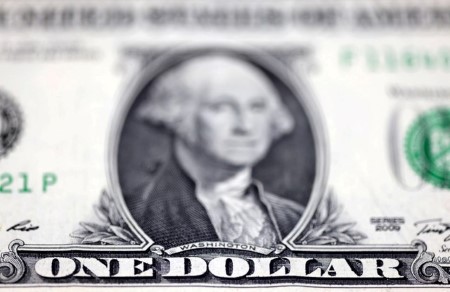




Philippines Trade Update: Exports momentum continues
 DOWNLOAD
DOWNLOAD

Quarterly Economic Growth Release: More BSP cuts to come
 DOWNLOAD
DOWNLOAD

Monthly Economic Update: Fed catches up
 DOWNLOAD
DOWNLOAD


Dollar plummets on tariff turmoil, US data

The dollar index experienced its largest decline in more than two years on Thursday, reaching a six-month low as risk sentiment deteriorated following US President Donald Trump’s announcement of “reciprocal” tariffs and a batch of underwhelming US economic data.
Commerce Secretary Howard Lutnick said there is no chance Trump will back off tariffs and that the administration is talking with trading partners on reducing tariffs if rules allow for more imports of US products.
Responses to the tariffs were mixed. Mexican President Claudia Sheinbaum celebrated the preferential tariff treatment under the prior USMCA agreement and Canadian Prime Minister Mark Carney announced a limited set of counter measures.
European Commission President Ursula von der Leyen said the EU was prepared to respond with countermeasures if talks with Washington failed, while French President Emmanuel Macron called for responses “industry by industry,” adding that European companies should suspend planned investment in the United States. Spain offered its companies a financial package of loans and direct aid to weather the impact of the tariffs.
Switzerland’s government called the US tariffs calculations incomprehensible, with the Swiss finance minister later saying the country does not manipulate the franc to boost exports. Britain said it believed a trade deal with the United States was close.
In data, the ISM’s nonmanufacturing PMI fell to a below-forecast 50.8 last month, with employment contracting for the first time in six months.
Weekly jobless claims fell for the week ended March 29 though continuing claims rose to the highest level since November 2021.
Challenger, Gray & Christmas reported that planned layoffs surged to the highest level in over four years in March. The employment data comes ahead of Friday’s US jobs report for last month. The median forecast for non-farm payrolls is 135K.
Federal Reserve Vice Chair Philip Jefferson said he is inclined to leave the US central bank’s policy rate at its currently modestly restrictive level while keeping a close eye on what happens with jobs and prices.
EUR/USD surged to a six-month high of 1.1144 before trimming gains amid US corporate offers and profit-taking. The pair looks to test the 1.1214 September 2024 high as bulls reengage though its entering overbought territory. Near-term support is at the 1.0954 March 18 high.
ECB board member Peter Kazimir said US tariffs are to a large extent factored into worse-case scenarios of the European Central Bank’s forecasts.
USD/CHF’s slide puts it on pace for its worst decline since June 2022 even after the country reported a scant 0.3% annualized rise in consumer prices in March.
GBP/USD’s rise was not as robust at its G10 peers, with gains stalling near the 1.32 level. The March 19 high of 1.3010 offers near-term support, while a drop below its 21-day moving average at 1.2949 would help neutralize bulls. EUR/GBP rose to a three-week high as the euro outperformed several of its counterparts.
USD/JPY tumbled to a new year-to-date low of 145.19 after the US data before settling near 146 as shorts covered.
Overnight volatility sits at 23% ahead of the US jobs report. A move above 146.55, its prior year-to-date low, the lower Bollinger and the August 5 high, would help to slow downward momentum.
USD/CNH was down 0.2% after Fitch downgraded China’s sovereign credit rating. Some favor owning AUD/CNH as regional growth concerns play out.
Treasury yields were down 6 to 18 basis points as the curve steepened. The 2s-10s curve was up about 5 basis points at +28.2bp.
The S&P 500 sank about 4% and oil plummeted 6.6%.
Gold slid 1% as it pulled back from a record while global demand worries sent copper down 3.8%.
Heading toward the close: EUR/USD +1.67%, USD/JPY -1.93%, GBP/USD +0.68%, AUD/USD +0.57%, =USD -1.05%, EUR/JPY -0.24%, GBP/JPY -1.24%, AUD/JPY -1.27%.
(Editing by Burton Frierson
Reporting by Robert Fullem)
This article originally appeared on reuters.com





 By Reuters
By Reuters